Spring carnivals all around the world
For Hungarian children, February means getting ready for school carnival: making the best costume and eating as many doughnuts as possible. Yet the tradition of celebrating the end of winter and the beginning of spring is as ancient as mankind itself. The best-known spring carnivals are those in Rio and Venice, but there is also a long tradition in Germany.
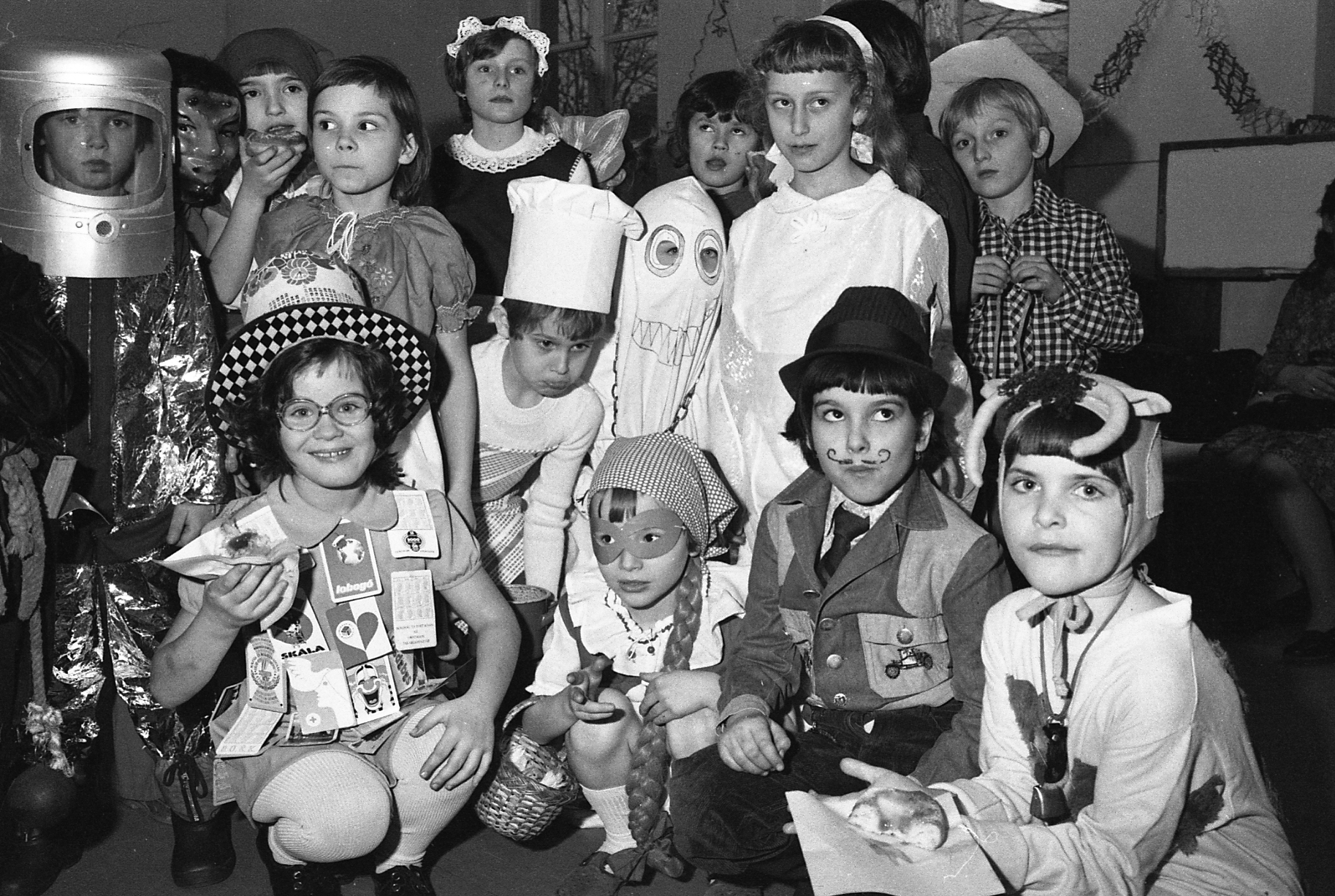
However, with the spread of Christianity, this celebration virtually disappeared in Europe, only to reappear much later, at the end of the Middle Ages. The Carnival is the period from Epiphany to the beginning of Lent, marking the end of Christmas in Christian culture and the start of the carnival period.
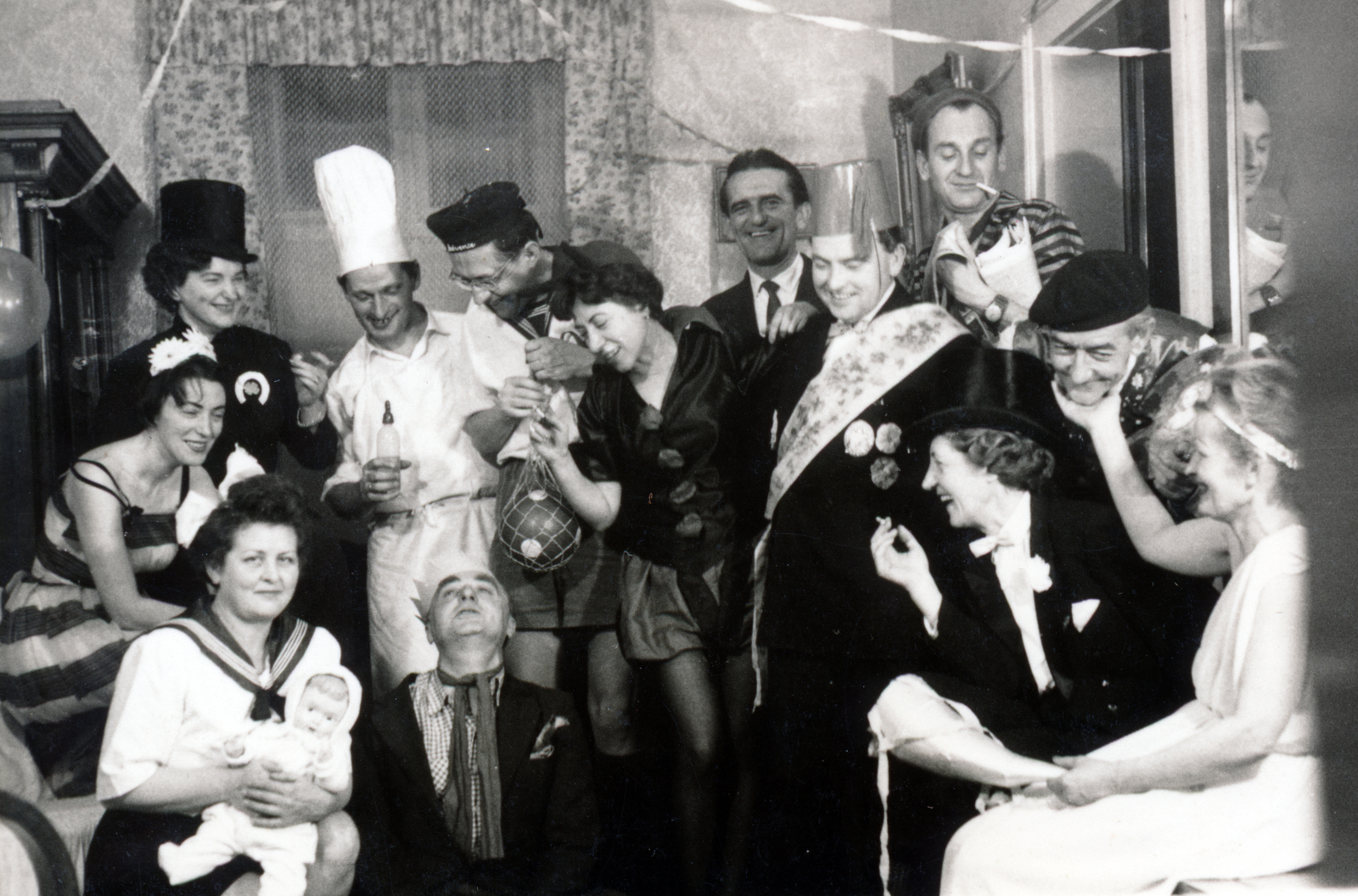
In medieval Hungary, carnivals were highly favoured events that provided an excellent opportunity to mingle and find potential partners. Therefore, the primary focus of these celebrations was to get engaged. From then until Easter, dancing and merrymaking were forbidden, and even weddings were prohibited.
Doughnut with a ribbon
Unlike the modest diet of Lent, the Farsang period features a rich menu of sweets and meats. One of the most famous delicacies during this time is the carnival doughnut, known as "Szalagos Farsangi Fánk." These treats are fried in shallow oil, flipped with a light ribbon of pastry around the middle, and then filled with cream or apricot jam. Finally, they are dusted with powdered sugar, making them a mouth-watering dessert for anyone with a sweet tooth.
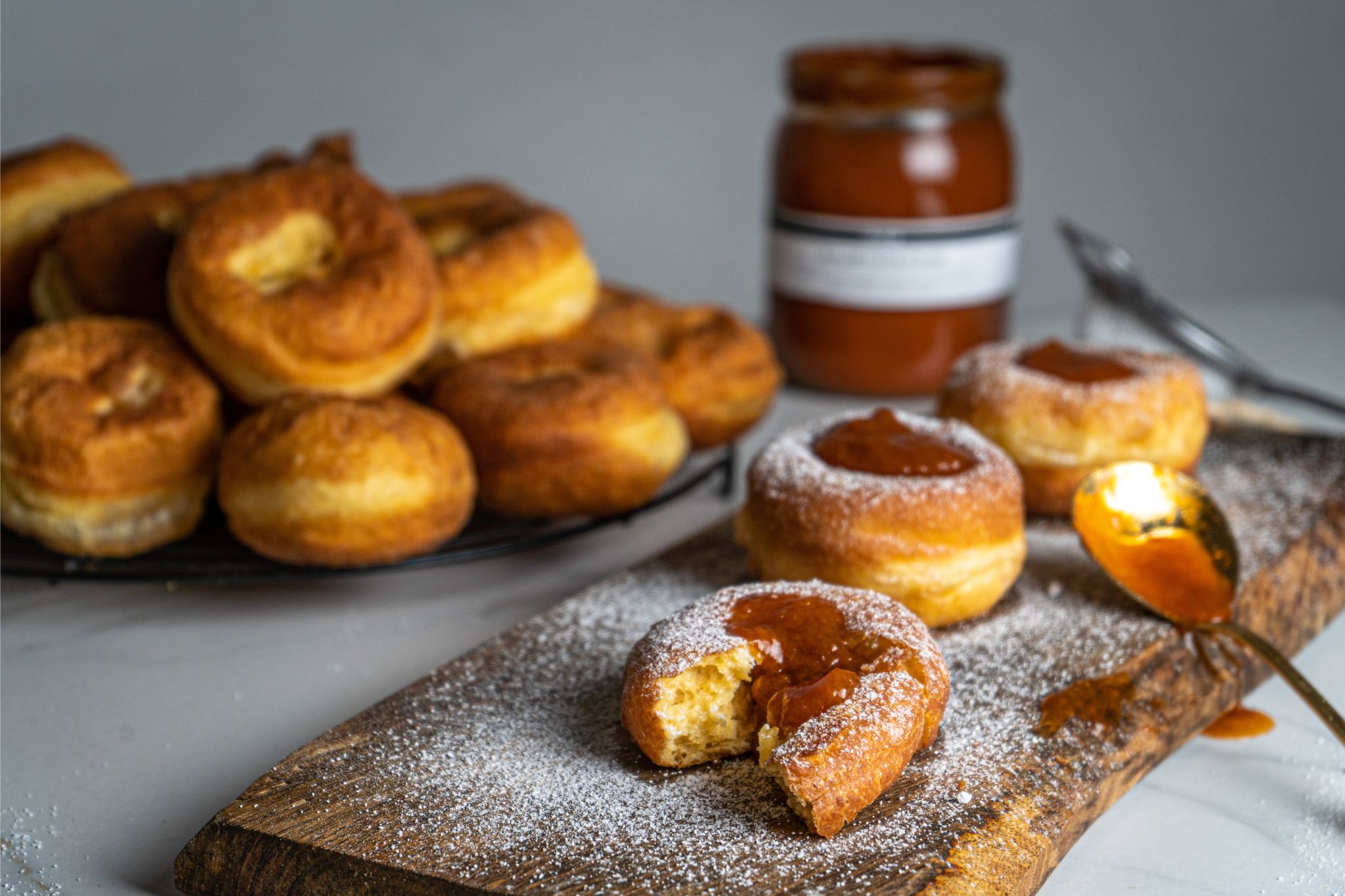
The tail of Farsang
The high point of Farsang is its last three days, called “Farsang Farka” ("the tail of Farsang"), lasting from Farsang Sunday through to Shrove Tuesday (or "Húshagyókedd" in Hungarian). The most remarkable event during this time in Hungary is Busójárás.
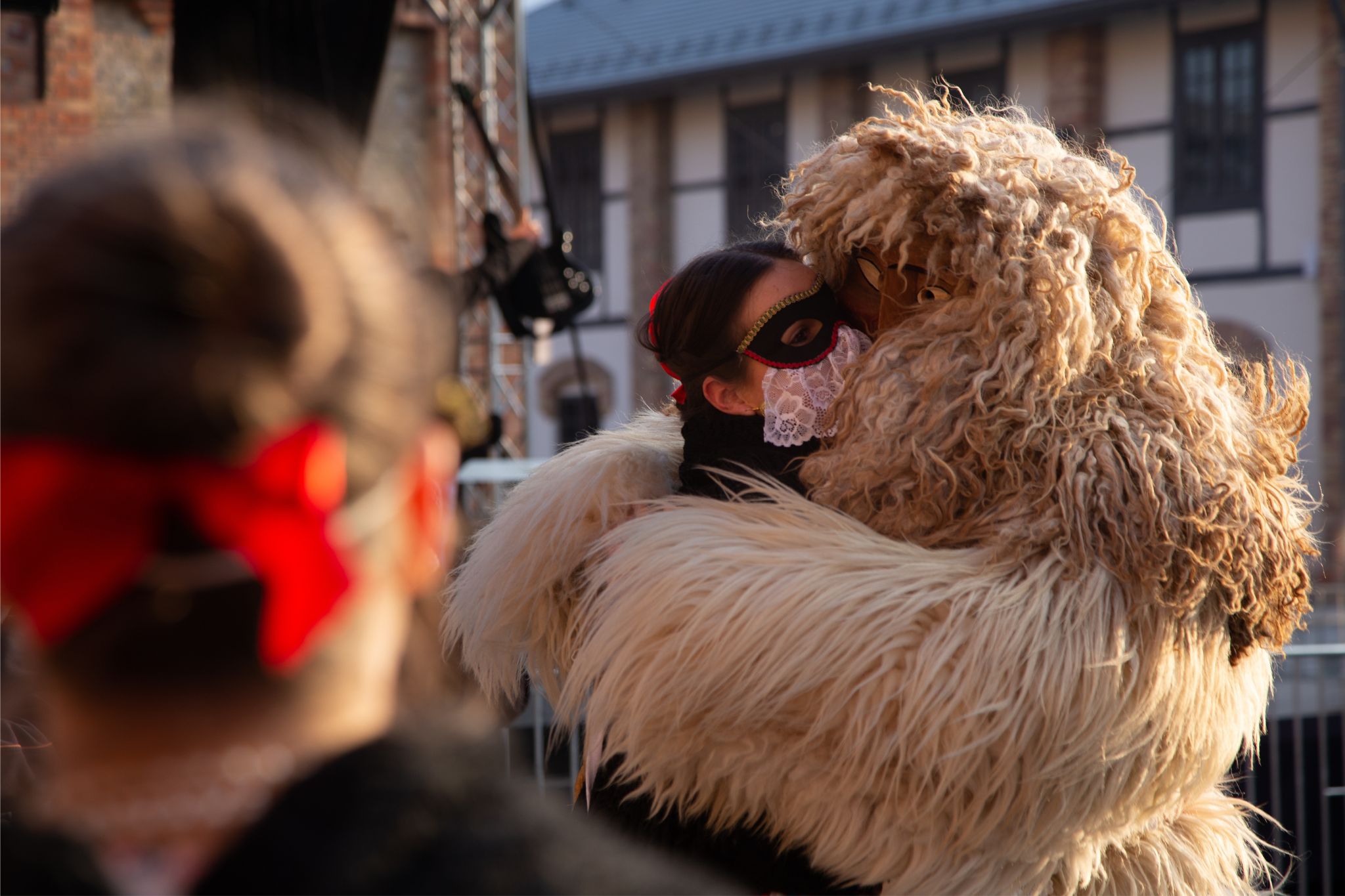
Busójárás is an annual folk festival celebrated in the picturesque town of Mohács, located in southern Hungary near the city of Pécs, typically held just before the onset of Lent. This UNESCO-recognized festival is a colourful spectacle featuring elaborate masks, traditional costumes, and a lively atmosphere that captivates locals and visitors alike.
Who are the Busós?
Traditionally, Busós are men wearing scary costumes, unique wooden masks, and woolly cloaks made of sheepskin. They chase around and circulate among the crowd while pulling pranks and making a big noise as a symbol of scaring winter away. Although most Busós are men, women also participate, dressing up as female Busós or wearing costumes reminiscent of female Ottoman Turks.
Noise as a weapon
According to legend, during the 16th century, the Šokci people, a South Slavic ethnic group from Croatia, fled from the Ottoman troops and took refuge in nearby swamps. One night, they used scary masks and loud objects to scare away the Ottomans, creating rattling and clattering sounds. Although there is no historical evidence to support the story, the legend of Busós remains popular among the townspeople.
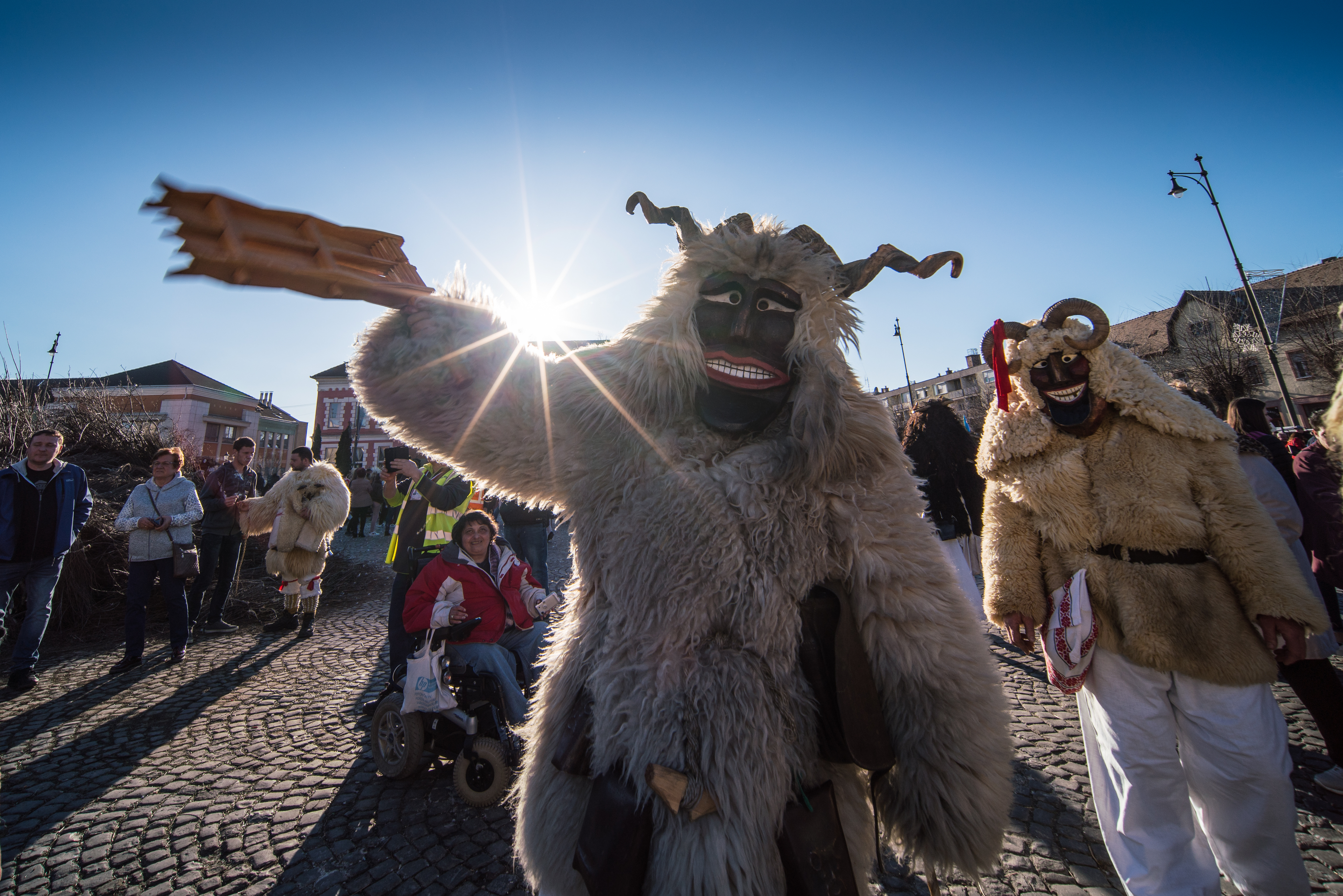
Mohács is an important historical site in Hungary where two decisive battles took place in 1526 and 1687, marking the beginning of the Ottoman invasion and the end of the Ottoman Empire, respectively.
Sinking the coffin of Old Man Winter
Nowadays, Busójárás is a true end-of-winter celebration, featuring various events such as crossing the Danube on large ferry boats or sinking the coffin of Old Man Winter into the river. The highlight is undoubtedly the grand parade that winds through the narrow streets of Mohács. Locals, adorned in intricate costumes and masks, dance to traditional folk music, creating a lively and enchanting atmosphere. The Busós, with their menacing masks, add an element of mystery and playfulness to the festivities.
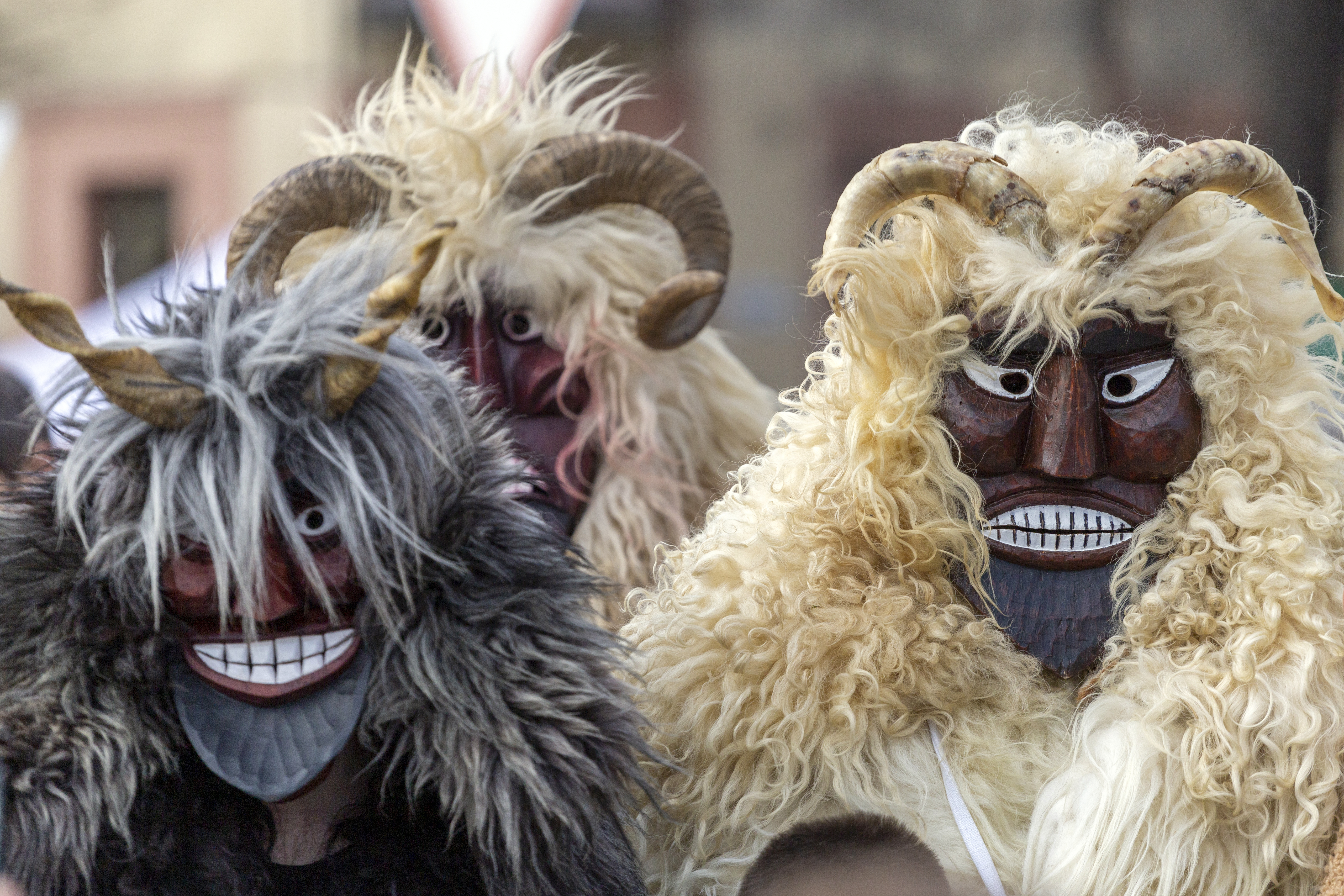
The Busó masks are a work of art, often crafted from wood with exaggerated features, representing various characters from Hungarian folklore. The accompanying costumes are made from sheepskin and are intricately designed, reflecting the creativity and craftsmanship of the local community.
Be part of it!
If you are currently studying in Hungary, make sure to check out the exciting carnival season activities that the country has to offer. For an unforgettable experience, head over to Mohács and take part in the unique Busójárás festival. While you're there, don't forget to try the traditional carnival doughnut! We invite you to chase away the cold weather by dressing up in a fancy costume, enjoying a fun-filled night with your friends, or attending a grand ball that will leave you amazed.
Sources: